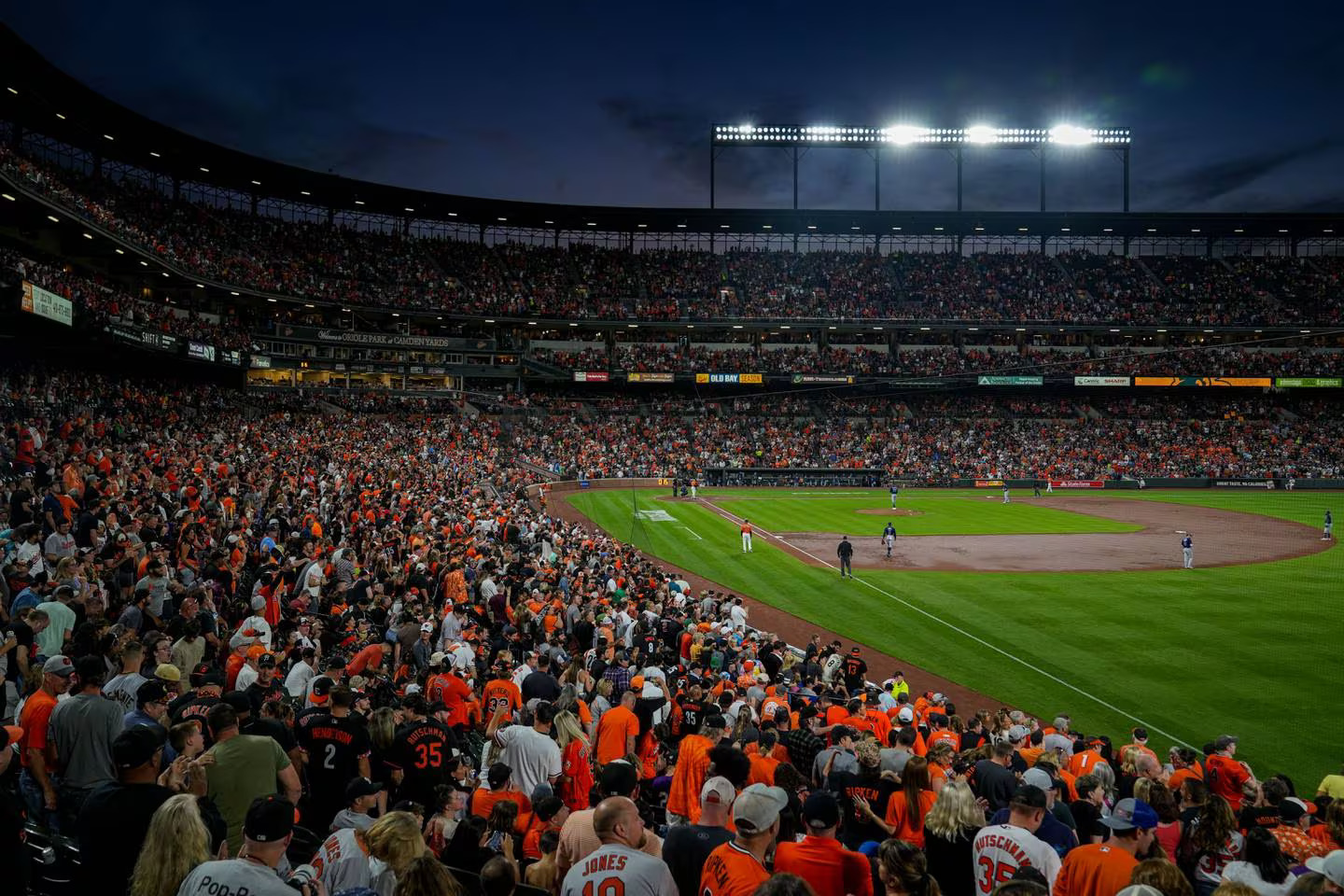
The Orioles have signed a veteran in exchange for catching depth
First, it was another step toward resolution of the Orioles’ television rights fee dispute with the Washington Nationals, which has served to delay the club’s own revenue from its local media rights. Then, it was the long-awaited lease agreement to solidify the team’s future at Camden Yards — even if the development rights the Orioles covet weren’t included just yet.
For years, they were at least plausible motivations behind the team keeping its payroll at the bottom of the league — at times matching the club’s on-field ambition. Now, we’re about to find out just how relevant those factors were.
The reality is, teams that the Orioles consider their small-market peers routinely spend more than they do, though not all of them have the vision for sustained success the Orioles’ baseball operations department does. But, if Baltimore can’t spend toward furthering that success with some of these revenue obstacles clearing from its path, it’s fair to wonder when it will.
In the name of fairness, it’s not as if anyone from the team outwardly cited anything like that as a reason resources might be limited. The Orioles are, at the least, gradually escalating their payroll, as was clarified when it became clear “liftoff” wasn’t the correct descriptor of the 2024 offseason. We have John Angelos’ comments to the New York Times that the club can’t sustain nine-figure contracts, but perhaps outside an extension to one of the young stars, no one is really asking for that.
At this point, just getting the payroll to nine figures would be nice — and with Craig Kimbrel already in the fold to go with over $20 million in expected arbitration raises, they’re a veteran free agent pitcher away from getting close.
That’s where it gets a bit complicated. I don’t think it’s naive on my part to separate the ability to sign a free agent pitcher from a financial standpoint and their desire to do so from a baseball standpoint. I believe they can, and I believe they are probably being overly discerning in examining the market. So, when Martin Perez signs for one year and $8 million with the Pittsburgh Pirates, it seems like a move the Orioles both could have made and didn’t want to. (He will fulfill his destiny to be an Oriole at some point, though.)
Similarly, when Jack Flaherty — who underwhelmed down the stretch as the club’s trade-deadline rotation reinforcement — signed with the Detroit Tigers for $14 million on a one-year deal, there’s no arguing such a deal would have made the Orioles better. We already saw that it didn’t.
This isn’t even about spending money for the sake of it. I’m probably more inclined than most to believe there’s any kind of baseball philosophy or nonfinancial rationale to the Orioles’ front office operating the way it does. And I don’t think any of the smaller-market teams throwing money around this winter have done anything particularly enviable.
I’m of the mindset — and I believe the Orioles are too — that they should do everything within reason to improve this team. Now, they just have fewer excuses not to do so from a financial standpoint.
So again, if we’re talking upgrades to the rotation — one that has Kyle Bradish and Grayson Rodriguez solidified near the top and boasts John Means, Dean Kremer, Tyler Wells and DL Hall, who would be written in pen in nearly every other rotation in the league — the options are slim. Blake Snell and Jordan Montgomery would fit the bill but are going to be costly.
Once Japanese star Yoshinobu Yamamoto signs and opens up the pitching market, Japanese left-hander Shota Imanaga could fit the bill for the Orioles. There are also all those trade options that, by now, have become as well known to Orioles fans as Bradish and Rodriguez.
The money to make those upgrades isn’t going to just materialize now that the team is closer to realizing profits from MASN or has signed a lease. In reality, with tens of millions of dollars coming to the team through national media distributions and revenue sharing, that money already exists and its best use is on the field.
If nothing else, more resolution with the MASN dispute and the lease signing serves as a clearing event of some sort, if not actually for the free-and-clear spending many expect. It removes those as potential excuses for the Orioles not competing to their fullest potential.
Leave a Reply